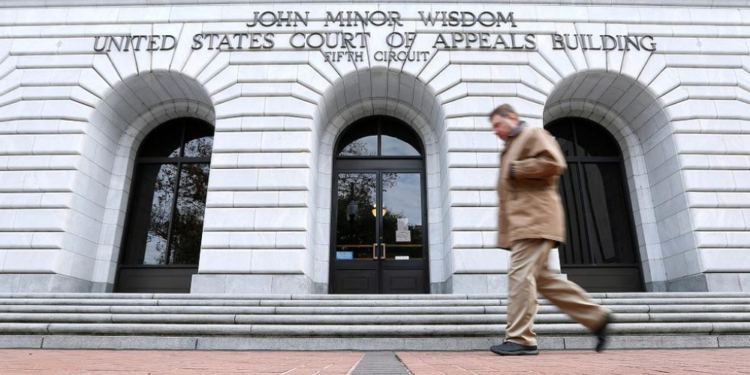March 1, 2025 Story by: Editor
A recent ruling by the U.S. Fifth Circuit Court of Appeals could have significant implications for municipal design review processes, particularly in cases where aesthetic regulations restrict property owners’ rights.
The case originated in San Marcos, Texas, where homeowners Kristy Money and Rolf Straubhaar sought permission to remove a wrought-iron balcony featuring a “Z” from their Depression-era home in the Burleson Historic District. The “Z” referenced Frank Zimmerman, a former San Marcos mayor and theater owner with ties to the Ku Klux Klan.
In April 2023, the couple submitted a request to the city’s Historic Preservation Commission to remove the balcony, with Money stating that Zimmerman’s initial “does not conform with my family’s values.”
After the commission denied their request, Money and Straubhaar filed a federal civil rights lawsuit against the city and its planning and development director, Amanda Hernandez. They argued that the city’s decision violated the Fifth and Fourteenth Amendments by preventing them from altering their property. The Fifth Amendment prohibits the government from taking private property “for public use, without just compensation.”
A U.S. district court initially dismissed the lawsuit, ruling that the couple had not exhausted the city’s appeals process by taking their case to the Zoning Board.
Fifth Circuit Court Overturns District Court Ruling
However, on February 7, the Fifth Circuit reversed that decision, emphasizing that “regulations of property for purely aesthetic purposes have violated the Texas Constitution for over 100 years and still do.”
This ruling could affect municipalities nationwide, as many cities enforce aesthetic ordinances that regulate building designs, streetscapes, and signage.
Christian Townsend, an attorney with the Texas Public Policy Foundation, which represented Money and Straubhaar, said the ruling sets a significant legal precedent. “We intend to follow [this precedent] in this case and other cases,” he stated.
The Texas Public Policy Foundation, a nonprofit organization advocating for “liberty, personal responsibility, and free enterprise,” took on the case pro bono, believing it could strengthen property owners’ rights.
Townsend criticized the city’s stance, stating, “The fact that the city wouldn’t allow [Money] to remove something that is so contrary to her family values really shows the absurdity of the ordinance.”
Potential Next Steps in the Legal Battle
San Marcos officials declined to comment on the ongoing litigation. However, the city has the option to appeal the Fifth Circuit’s decision to the U.S. Supreme Court. If it chooses not to, the case will return to the district court for further arguments.
The Fifth Circuit judges—Kurt Engelhardt, Leslie Southwick, and James Dennis—cited the 1921 Texas Supreme Court case Spann v. City of Dallas, which ruled that an ordinance prohibiting certain types of construction based purely on aesthetics was an “unconstitutional exercise of the police power.”
The Texas Supreme Court ruled in 1921 that “purely aesthetic considerations” do not justify government regulations, stating, “It is not the law of this land that a man may be deprived of the lawful use of his property because his tastes are not in accord with those of his neighbor.”
While the district court had dismissed Spann as “generations out of date,” citing U.S. Supreme Court precedent allowing aesthetic considerations as a regulatory factor, the Fifth Circuit rejected that reasoning, noting that Texas courts are not bound by U.S. Supreme Court interpretations of state law.
Additionally, the Fifth Circuit referenced Loretto v. Teleprompter Manhattan CATV Corp., a 1982 U.S. Supreme Court case that deemed a New York law unconstitutional because it forced landlords to allow cable television equipment installation, constituting an unlawful “taking” under the Fifth and Fourteenth Amendments.
Townsend suggested that if the case returns to the district court, the legal team will argue that Loretto applies. “We think it has been clear in Texas for 100 years that these kinds of purely design review boards have not been allowed under Texas state law,” he said.
This decision could set a precedent that challenges municipalities’ authority to impose aesthetic regulations, potentially reshaping design review processes across the country. Source: San Antonio Express News

















